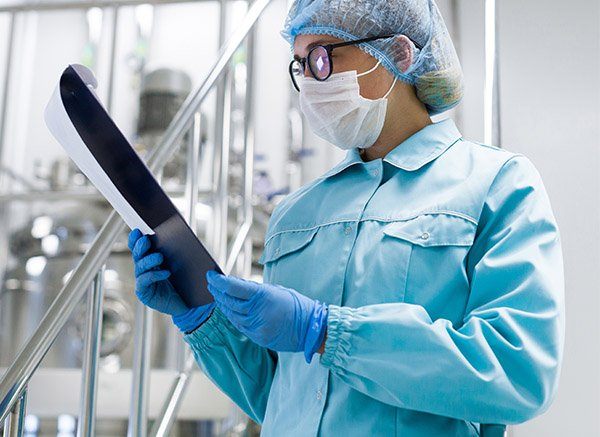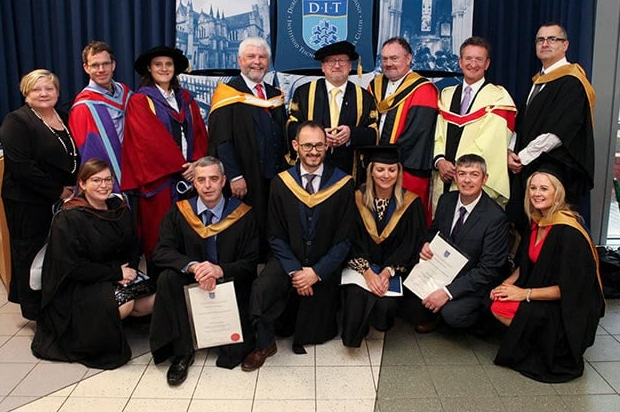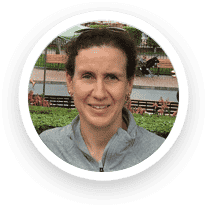This Program is Right For You If;
Eligibility for Springboard Funding
Springboard+ courses are designed to help you gain the skills necessary to either get a new job in industry areas where there is an increasing need or to upskill in your current job.
To take a course through Springboard+ you will need to:
- Be living fulltime in the Republic of Ireland
- Have your own, valid PPS Number
- Meet the nationality/visa requirement:
- You are an EU/EEA/UK/Swiss national or:
- You have Stamp 4/Stamp 4 EU FAM, Stamp 5, or Stamp 6 on your Irish Residence Permit (IRP) card. This includes:
- Permission to remain as a family member of an EU citizen
- Refugee/Subsidiary Protection status
- Refugee family reunification
- Humanitarian Leave to Remain (pre-1999)
- Permission to remain following a non-deportation decision
- Have lived in the EU, EEA, UK, or Switzerland for at least 3 out of the last 5 years
- Any period counted by the Department of Justice towards Citizenship (excluding Stamp 2 & 2A)
- For Refugees/Subsidiary Protection: residency is counted from the date of International Protection application
- Note 1: DSP recipients don’t need to meet nationality/residency requirements
- Note 2: Eligibility is determined by the third-level institution
When applying for a course through Springboard+ you will also need to apply on the basis of being:
- Employed – working for yourself or someone else
- Unemployed – not currently working, receiving a qualifying DSP payment (unless formerly self-employed), and actively seeking work
- A Returner – a homemaker, carer, or economically dependent on a partner/spouse for at least 9 of the last 12 months
Please Note: International Protection Act
From the 2022/2023 academic year, eligibility includes qualified persons under Section 60 of the International Protection Act 2015 in accordance with the EU Temporary Protection Directive 2001/55/EC.
Only the letter from the Department of Justice granting Temporary Protection provides proof.
The Irish Government is applying these rights to:
- Ukrainian nationals residing in Ukraine before 24 February 2022
- Third Country Nationals with permanent residency in Ukraine before that date
- Stateless persons or third-country nationals with international/national protection in Ukraine before that date
- Family members of the above groups

Our Education Partners


What new roles could I retrain for?
If you have no experience, you could apply for:
Process Technician – Some companies call this role:
- Chemical Process Technician
- BioProcess Technician
- Process Operator
Manufacturing Technician – Some companies call this role:
- Production Technician
- Manufacturing Operator
- Production Operator
Packaging Operator – Some companies call this role:
- Packaging Technician
And with more experience
- Senior Process Technician
- Production Supervisor
If you have a few years work experience and want to move away from manufacturing roles:
- Quality Assurance Specialist – Some companies call this role:
- Quality Assurance Associate
- Quality Assurance (QA) Technician
- Documentation Specialist – Some companies call this role:
- Document Controller
- Documentation Coordinator
- Validation Technician – Some pharma companies call this role:
- Associate QA Validation Specialist
- Equipment Validation Specialist
- CQV Specialist – Some pharma companies call this role:
- C&Q Specialist
- C&Q Junior Project Manager

Study all the way to a degree
Once you have completed the Certificate in Science in e-(Bio)Pharma Chem with Facility Design, take the next steps to build your qualification all the way to a degree.
STEP 2: Then you can take our Level 7 Certificate in Validation program to move into more senior validation roles with a higher salary. Typical roles
- Senior Validation Technician
- CQV Technician
And with more work experience
- Validation Engineer
- Process Validation Engineer
- Cleaning Validation Engineer
STEP 3: If you have completed our University Certificate in eBioPharmaChem Manufacturing and University Certificate in Validation which are standalone programs, you are already halfway to a Level 7 Degree. Take 6 more modules to get a BSc degree in Degree in Manufacture of Medicinal Products (DT 291)

Your 11-month class schedule
Module 1 – Fundamentals of Pharmaceutical Manufacturing Technologies
This module will give you a broad understanding of pharmaceutical manufacturing technologies, the rules that govern manufacturing and the guidelines on how these rules are applied along with the risk management tools to be used when making decisions that could impact the safety of the medicines being manufactured.
Module 2 – Advanced Writing Skills
This module will give you the written communications skills to properly write reports and reference and cite source material in a manner that is consistent with the professional norms of this industry.
Module 3 – Commissioning & Qualification of Equipment and Systems (VOMP 3002)
This program explains the engineering documentation used to specify and design equipment or systems in a manufacturing facility – and how to develop an IQ OQ PQ validation test protocols to ensure that it operates as intended and meets the regulatory requirements.
Module 4 – Pharmaceutical Facility Design
In this module, you will receive a strong grounding in the modern pharmaceutical science and engineering concepts of the environmental controls (air) and clean utility systems design that underpins an aseptic manufacturing facility and the quality systems used in this highly regulated environment to ensure the manufacture of safe and effective medicines for the public.
Module 5 – Chemistry for API’s (VOMP 3003)
This module will provide a foundation in the general chemistry necessary to understand the fundamental concepts involved in the chemistry of API (Active Pharmaceutical Ingredients) required for the manufacture of medicinal products.
Please note: This module is run as a group module (3 times a year) and you will be required to keep pace with the class during the running of this module. This is the only module that you won’t be able to control the pace of your study on.
Theory
Week 38 – Chemistry and Matter; Atomic Theory
Week 39 – The Periodic Table and Bonding
Week 40 – Stoichiometry
Week 41 – Acids and Bases Recrystallisation
Week 42 – Introduction to Organic Chemistry
Laboratory – Due to Covid 19, all laboratory sessions have been modified to be delivered 100% online.
Week 43 – Overview of Safety in Chemical Laboratories
Week 44 – Virtual Practical 1 – Separation of a 3 component mixture
Week 45 – Virtual Practical 2 – Synthesis of Aspirin
Week 46 – Virtual Practical 3 – Preparation for Volumetric Analysis
Week 47 – Virtual Practical 4 – Analysis of Baking Soda
Week 48 – Revision Week
Week 49 – Online Exam
Price & Start Dates
100% Springboard+ funded for unemployed, returners and self employed
90% Springboard+ funded if you are working
Application Deadline: Wednesday 25th July
Program Starts: 4th August
Hear from people who taken this program

Regina McNamara
Previous Background:
Professional Painter
“I can study around work and family commitments”
I’d recommend this course to anyone that wants to work in the Pharmaceutical and Medical Device Manufacturing industry and is interested in building a successful career in this area. The online experience is working well for me as I study around work and family commitments.
The companies I applied for were very impressed. I am currently working in Boston Scientific manufacturing Balloon Catheters for Gallstone patients.

Mehmet Hascan
Previous Background:
Technical Support
“Material was delivered in an engaging, interesting and supportive way”
Having faced a career change in the middle of an economic downturn, I lost some of myself confidence and needed a major boost. The area of Biopharmaceutical operations and validation was of interest to me as it does play an important role in the pharmaceutical industry at present.
I have now been working at Johnson and Johnson Vision Care as a Validation Engineer and I look forward to putting what I have learned into practice.

Sharon Egan
Previous Background:
Food Manufacturing
“Structurally well planned with the opportunity for practical application”
I found the course to be interesting, and structurally well-planned with the opportunity for practical application of the course modules through various assignments.
I have worked in the Medical Device/Pharmaceutical and Food industries and found the course to be extremely relevant to all industries.
Agnes Hove
Domagoj Wunderlich
Patricia Radulescu
Kieran Mac Namara
Delivered by industry experts
Dr. Joe Brady
Full-Time Validation Lead
Lecturer, Technological University Dublin
Senior Associate, GetReskilled
Dr. Joe Brady is a full-time practicing Validation Lead and an assistant lecturer with Technological University Dublin (TU Dublin), in the School of Chemical and Pharmaceutical Sciences. Joe is a certified trainer and highly experienced in competency-based training. He designs and prepares educational modules and full academic programs ranging from MSc, MEngSc. BSc, to Certificate level, for a range of academic institutions.
He is also a supervisor for MSc/MEngSc and Ph.D. theses. Joe has over twenty years of project experience in the pharmaceutical, biopharmaceutical, and medical device industries in Ireland, Singapore, China, The Netherlands, France and the USA.
Professor Anne Greene
Senior Lecturer, Technological University Dublin
Professor Anne Greene is a Senior Lecturer in Pharmaceutical Technology, Validation and Pharmaceutical Quality Assurance to undergraduate and postgraduate students and a Pharmaceutical Projects Manager at Technological University Dublin, Ireland.
In addition, Anne is the Director of the Pharmaceutical Regulatory Science Team and is also secretary of the Parenteral Drug Association (PDA) Secretary, Irish Chapter. Her experience ranges from a technical service chemist, Sterling Wintrop Dungarvan, (now GSK), validation manager at startup Wyeth Newbridge, (now Pfizer) and is a Training Director at NIBIRT in Ireland.
How We Deliver Our Online Courses without ZOOM Classes
With every GetReskilled ONLINE program:
- We use one centralized platform (Moodle) where you can log into your classroom anytime. Each week, you’ll watch videos and complete quizzes, tests, interactive activities, and projects. Course materials are available 24/7, and there are no scheduled Zoom classes, so you can study whenever it suits you—for example, after the kids have gone to bed, on the weekend, or whenever you have free time.
- Your working schedules are unpredictable, so we offer flexible delivery. Slow down, speed up, or pause the delivery of the program as needed.
- We release only one week’s worth of material at a time and manually check your activity logs at the beginning of every week to make sure you’re on track.
- You’ll also get a dedicated course leader who will:
- Help you create a weekly study plan
- Answer any questions
- Check your progress every Monday
- Follow up regularly to support you through to completion
This all helps us to spot any potential issues early and helps you completely finish the program.
Meet your online classroom support team
We have a team of in-house experts to provide guidance and support, whenever you need it.
Career Coaching

Meet Claire who runs GetReskilled’s Advanced Career Coaching Programme – our specially devised job hunting course that helps our trainees take that final step into employment by leading them through the job hunting process.
Classroom Support Team

Your Course Leaders, Coordinators, and members of the Classroom Support Team are here to provide you with answers, tips, and are going to check your progress weekly to keep you on track and will reach out to you by email or even by phone if you fall behind!
9 frequently asked questions
So let’s get started…
Contact Details For This Course
Geraldine Creaner
Got more questions?
Fill out the form below and we’ll get back to you in one working day.
If you’d like to chat with us quickly, click on the blue chat bubble located in the bottom right corner of the page. We usually respond within a few minutes to a few hours.


